Greece › Peloponnese Best Places
By Santorini Dave
See Also
- Where to Stay in Athens
- Where to Stay in Nafplio
- Where to Stay in Monemvasia
- Where to Stay in Delphi
- Mainland Greece Travel Guide
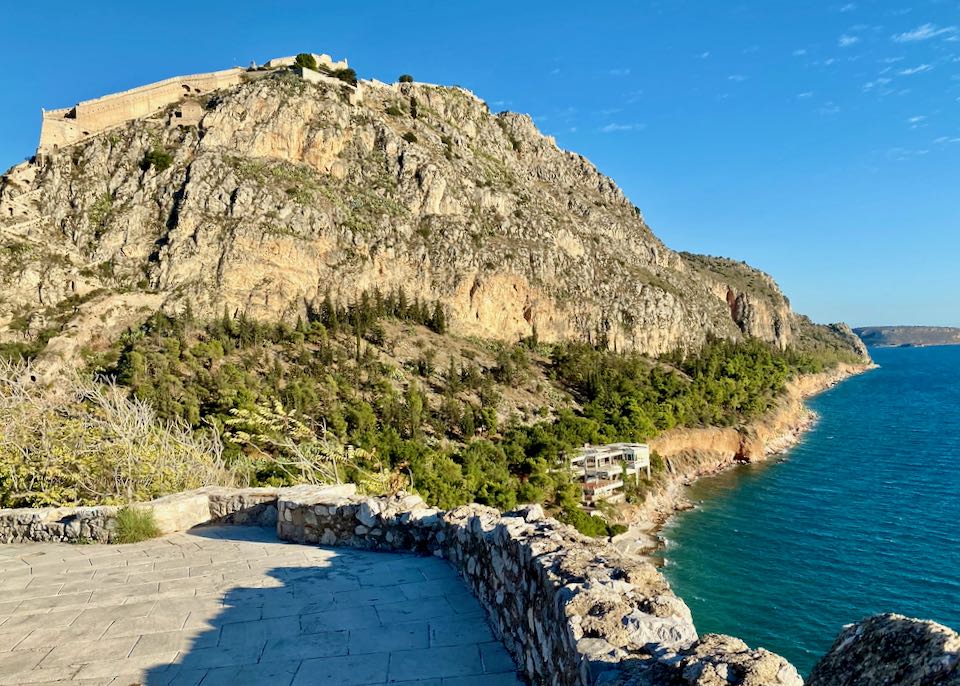
The hilltop fortress of Palamidi overlooking the Argolic Gulf in Nafplio.
Recommended Peloponnese Itineraries
The Peloponnese is a vast area – just under 21,500 square kilometers in size – that occupies the underbelly of Greece. It was the site of many of the country’s most important historical events and has played host to some of Europe’s most important civilizations. It is an ancient land by all accounts, with names such as Olympia, Mycenae, Epidaurus, Mystras, Corinth, Tiryns and Monemvasia still resonating in the public imagination.
The Peloponnese was the first tract of territory to begin the Greek War of Independence and the first to be claimed independent once the Ottoman Turks were initially defeated. Greece’s first capital was declared in Nafplio. It’s a land of rugged mountains, cleft valleys and gorges, and fertile plains – and boasts some of Greece’s most alluring beaches.
To see it in all its totality would probably take more time than your travel allowances permit, so here are a few itineraries that will allow you to get the best out of the time you have. The best way to see the Peloponnese is by renting a car, though with thought-out and astute planning you can take in many of the the sites listed below using public transportation. The itineraries assume that you will be touring with your own transport and wish to see as many sites as possible. (See also mini-itineraries under each destination entry)
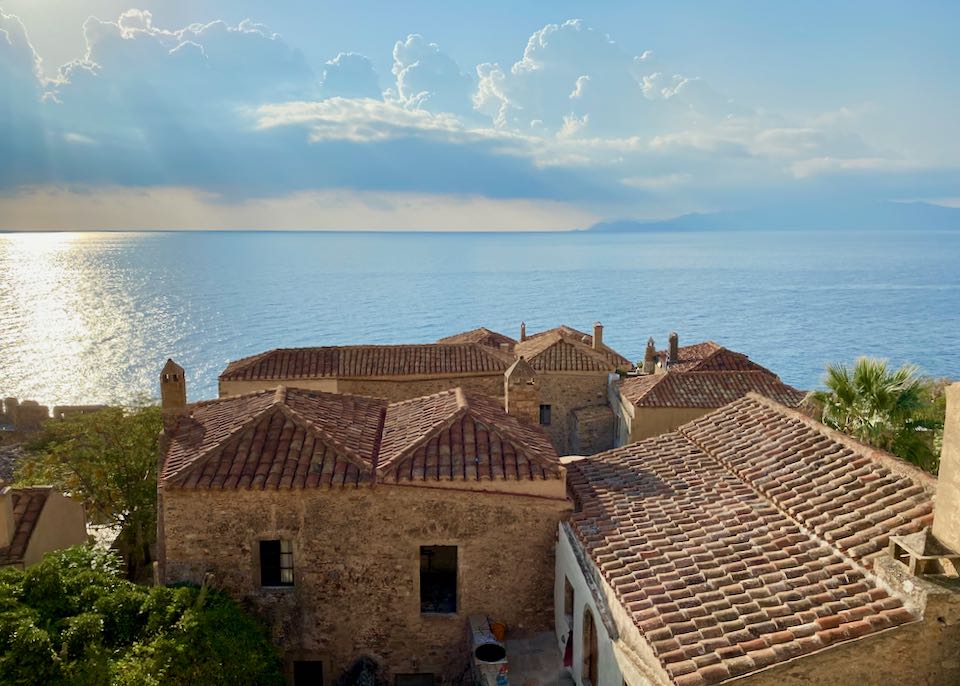
View to the Myrtoan Sea over the Byzantine castle town of Monemvasia, a recommended stop for travelers with a week or more to spend.
3-Day Itinerary
With only three days at your disposal, you are better suited to a tour to some of the main sites of the Argolis Peninsula on the northeast corner of the Peloponnese. You can save some backtracking by taking an early boat to Poros from Piraeus and working your way back to Athens via Nafplio, Mycenae, Epidaurus, and Corinth. Suggested overnight stops in Nafplio and Epidaurus.
5-Day Itinerary
Make Nafplio your first night stop while picking up Epidaurus and Mycenae along the way. Head down the coast. Cross to Tripoli and head north into Arcadia and spend a night in Stemnitsa or Dimitsana deep in the heart of Arcadia. Cut across the mountains and passes to Olympia and see the original home of the Olympic Games. Be bold and thrust across more mountains to Kalavryta and enjoy another night in the country. Return home to Athens along the Gulf of Corinth coastal road.
1-Week Itinerary
With an extra two days to play with things are looking more relaxed. With Athens as your starting point once again head for Nafplio via Epidaurus and Mycenae. After Nafplio cut southwards for the sizeable run to Monemvasia and spend a night in a walled medieval castle town on a sea-surrounded rock. From Monemvasia head your way across to Kalamata while visiting late Byzantine Mystras along the way. Heading further westwards pick up the sea again at Pylos. If energy allows, pick up the Koroni/Methoni loop for a swim (it’s an extra 100kms) and make Olympia your two-night destination. Save kilometers and head northeast to Kalavryta for an early dinner. Return to Athens via the fast coastal highway pausing at Ancient Corinth or the wondrous Corinth Canal along the way.
2-Week Itinerary
With a fortnight at your disposal, you have a very flexible route ahead and you can take in most of the 15 listed sites on here. Depending on whether you start from Patras (after arriving by ferry from Italy) or Athens, you can make a general anti-clockwise or clockwise route bending the route as much or as little as possible. An anticlockwise route might take in the following sites in this order: Patras, Kalavryta, Arcadia, Olympia, Pylos, Kalamata, Mystras, Mani, Gytheio, Monemvasia, Nafplio, Mycenae, Epidaurus, Porto Heli, Poros, Corinth. From Athens as your starting point make the route in reverse.
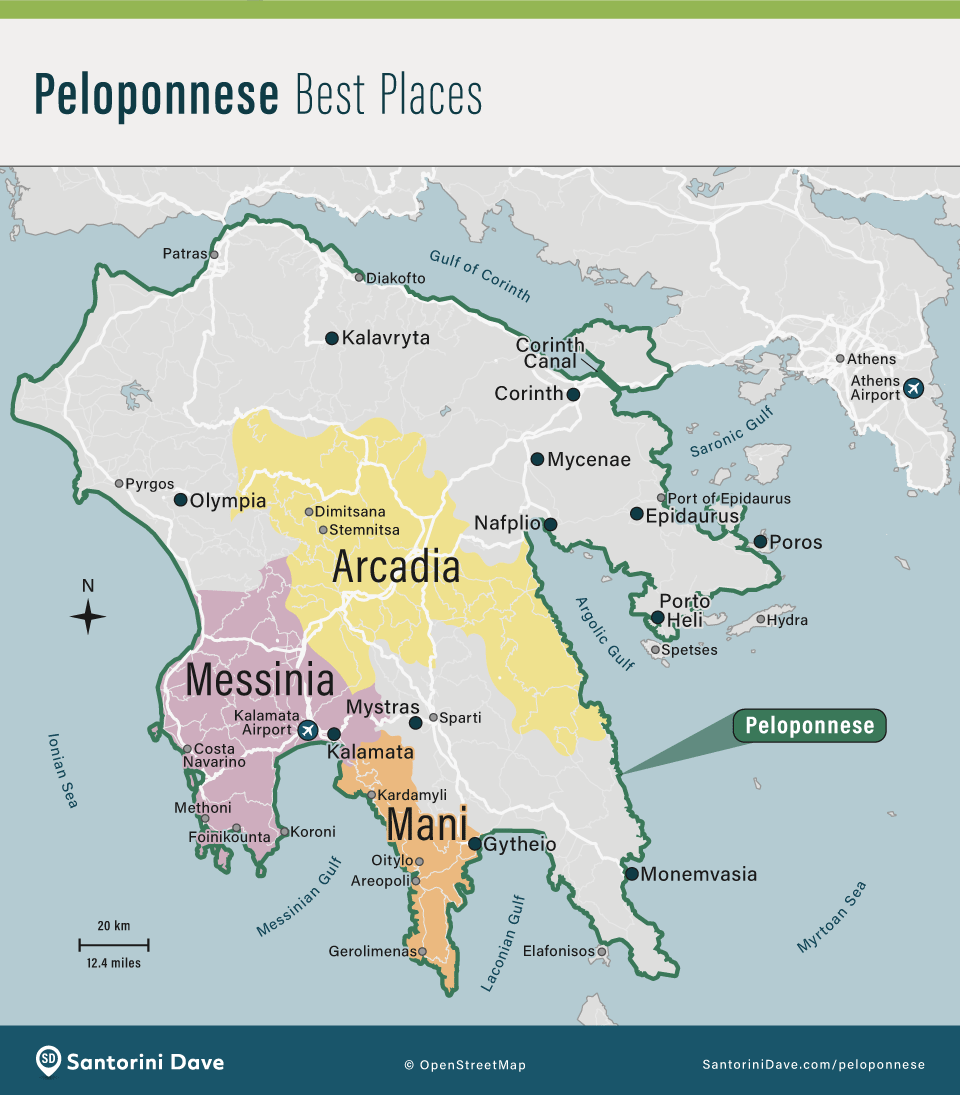
15 BEST PLACES TO VISIT IN THE PELOPONNESE
Arcadia
Thought of by many even to this day as a romantic poets’ utopia where sheep cavort on rolling hills under shady plane trees, Arcadia has always had a fascinating pull on travelers, even those who previously didn’t know it existed. Arcadia – also known as Arkadia or Arkady – is the Peloponnese’s leafy and green heart, which by and large lives up to its emotive reputation.
History
Sheltered for eons by rugged mountains, the expansive Arcadia region has remained relatively untouched and unconquered by most outsiders – even the marauding Dorians who came down from the north in pre-classical times and invaded and settled what is today’s Greece. Arcadia is not one place as such, but rather a broad geographical expanse that extends from Mt Erymanthos in the north to Tripoli in the south, focusing primarily on the villages of Stemnitsa and Dimitsana. Eastward, the region extends to a coastal section that runs between Kiveri in the north and Leonidi in the south.
Arcadia lends itself to slow exploring under your own steam as buses are infrequent and their timetables are designed for the locals rather than visitors. Dimitsana is a medieval-like settlement with a permanent population of little over 300 souls. It a good base for trekking or rafting; serious hikers might consider the 72.5kms-long Menalon Trail that runs through the heart of Arcadia’s ever-changing terrain from Stemnitsa to Langadia in eight sections that each average around 9kms. The trail runs through gorges, river valleys and mountain slopes. Four villages along the way offer accommodation and dining options. Tourism central it certainly is not, but it is a compelling, timeless land that mirrors the utopian image that we all like to believe exists – when it in fact actually does.
Itinerary
Most travelers will prefer to see this poetic-sounding land at their own speed, following their whim on their own wheels. You can allow as little or as much time to travel Arcadia as you wish. The distances when extracted from a map are not huge, but travel will be slow. Allow a minimum of two to three days to do Arcadia any justice. Visitors intent on enjoying the atmosphere are advised to base themselves in either Stemnitsa or Dimitsana to avail themselves of more sleeping and eating options. Day trippers could just take in either of these two villages from Tripoli.
Recommended Arcadia Hotels
- Mpellaiko – Cozy and comfortable restored 17th-century Stemnitsa mansion.
- Enastron Guesthouse – Elegant stone-built Dimitsana guesthouse with in-room fireplaces.
- MANNA – New 5-star luxury hotel in the scenic Mount Mainalo forest.
Getting There and Around
Personal transport rules in Arcadia. The area is best approached from Tripoli in the south on the E65 motorway that runs to Athens and links to winding route 74 over the mountains that conveniently leads to Olympia(80kms). Adventurers may also enter Arcadia from Kalavryta (82kms) along a winding secondary road that cuts through some of the remotest territory of the Peloponnese. Tripoli’s bus station will conveniently transport visitors to the main centers from around €6 to €9.
Corinth
Two disparate destinations can be found in the same general area here: Ancient Corinth and the Corinth Canal. Ancient Corinth features the remains of one of the largest and most important cities of ancient Greece, while the Corinth Canal is one of the modern nation’s more impressive manifestations of engineering.
History
Ancient Corinth was once one of Greece’s most important and populated city-states, having been occupied from at least as early as the 7th century BC. At its peak in 400 BC, it boasted a population of 90,000. Few remnants exist of its Classical and Hellenistic periods, however; after the Romans sacked Corinth in 146 BC, they rebuilt a new city on the same site almost a hundred years later. Today, the main sights are the impressive sea-view Temple of Apollo (one of the last remaining of the city’s Greek ruins), columns and walls from the ancient Roman city, and a small but impressive museum. Visitors can also travel a bit further up into the fortified mediaval hilltop castle of Acrocorinth – sturdy shoes and stamina required. Ancient Corinth is a popular destination for Christian travelers, as the location featured prominently in the New Testament and in the missionary travels of the Apostle Paul.
Bisecting a thin isthmus of land between mainland Greece and the Peloponnese the Corinth Canal renders the Peloponnese a virtual island. It connects the Gulf of Corinth in the Ionian Sea and the Saronic Gulf in the Aegean Sea, shortening the journey between the two seas by 700kms. Ancient Greeks long dreamt of forging a waterway through the land to join the two seas, but the topography thwarted any thought of making it happen. This impasse remained until the creation of the new Republic of Greece in 1830. After much wrangling and bargaining with a French company, construction commenced in 1882 but quickly ran out of cash. New money was found, and the work recommenced in 1890 and was finally completed – 11 years after the first excavations –in 1893. The canal, a marvel of engineering, has never really turned a profit from shipping. Its exceedingly high walls, the unstable nature of the rock walls (causing frequent rock slips), and the turbulent currents from both seas made passage through the canal sometimes quite perilous. In later years, larger vessels could no longer make the passage. Some cruise ships occasionally make the effort and squeeze through but, by and large, the canal exists these days as a spectacular tourist attraction. The canal is a breathtaking sight and is worth the short diversion – but think twice if you are wary of heights.
Itinerary
Both Ancient Corinth and the Corinth Canal are conveniently visited as a side-attractions when either entering or exiting the Peloponnese by road. Allow 2 hours to visit Ancient Corinth – double that if you plan to make the additional trek up to Acrocorinth. It will take you no more than half an hour to comfortably enjoy the view at the Canal, but there are a couple of attractions for you and/or the kids such as Zulu Bungy on the east side or the Splash Waterpark Isthmos on the west side. Cafes and restaurants on either side of the canal offer a quick and casual lunch.
Recommended Hotels near Corinth
Most travelers to Corinth will stay in Athens or Nafplio, as the town is only an hour outside of both destinations. Only those who want to really maximize their time at the ruins should consider staying in Corinth.
- Pegasus Rooms – Double, quadruple, and family rooms walkable to the ruins; garden courtyard, sea views.
- Vasilios Marinos Rooms – Clean, quiet, and comfortable hotel with a fantastic homemade breakfast, walkable to ruins.
- Apollon Filoxenia – Clean, modern hotel in the center of new (not Ancient) Corinth, 13-minute drive to the ruins.
Getting There and Around
Both sites are easy to visit if you have your own transport, located just off the main highway and an hour west of Athens at the very edge of the Peloponnese. Both can also be visited without a rental car via one of the many day tours from Athens or Nafplio. When visiting driving to the canal, park nearby on either side and walk onto the old road and pedestrian bridge. You will need to turn off the main highway (Motorway 8) before you arrive at the canal – be alert so as not to miss the exit. You will not get the chance to view or marvel at the canal if you continue on along the highway, and turning back will not be easy.
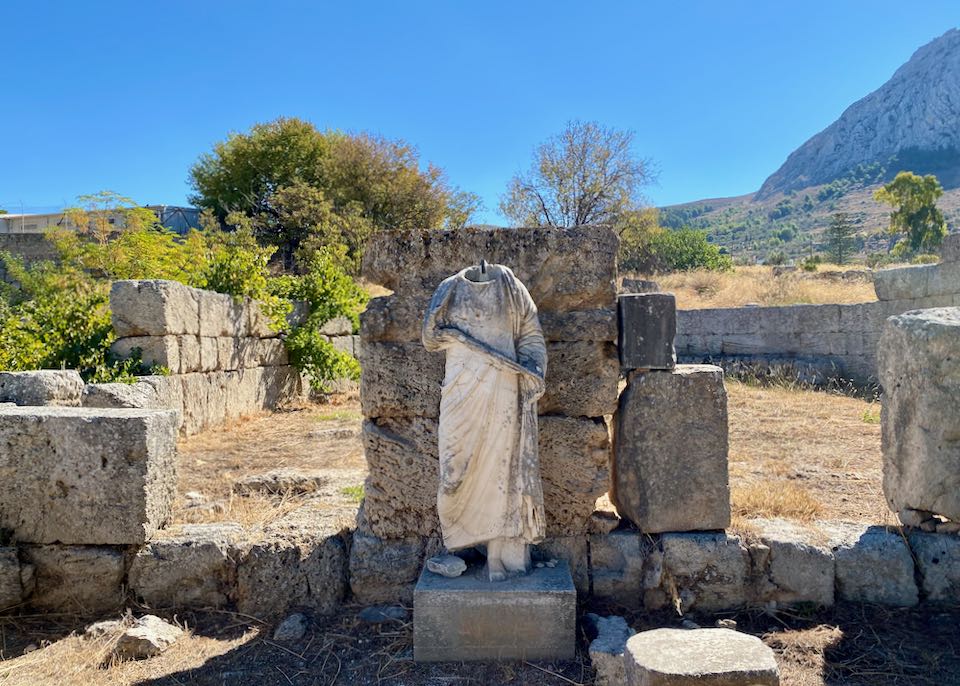
Ruins at Ancient Corinth.
Epidaurus
Epidaurus (also known as Epidavros) started out as a sanctuary for the sick and ailing rather than as a showcase for theater. Yet it is the spectacular open-air amphitheater that today draws travelers in droves to marvel at its ancient engineered acoustic perfection.
History
Asclepius – the Greek god of medicine and son of Apollo – was taken to Epidaurus by Apollo after killing his wife in a fit of jealousy. Under the tutelage of the Centaur Chiron, Asclepius became a healer and gained a huge following. At some point Zeus, fearing that Asclepius was raising the dead rather than curing the living, killed him with a thunderbolt – thus turning him overnight into a cult figure. Along with the eponymous Asklipieion in Kos, Epidaurus became a major magnet for the ancient ailing. Epidaurus is commonly considered to be the birthplace of modern medicine, and is now a popular destination for health pilgrims.
In time, drawing from the prosperity brought about by the healing center in the 4th and 3rd centuries BC, a theater was built on the site. The theater, designed by Polykleitos the Younger in the 4th century, quickly developed a reputation for its exceptional acoustics that allowed the spoken word from the stage to be heard equally clearly all around the auditorium. The Romans extended the size to accommodate 14,000 spectators and it is still in use to this day. Theatrical performances in both Classical and Modern Greek are organized during the summer months and highly recommended as a highlight.
Itinerary
Epidaurus can be visited on a tour or day trip from Athens or Nafplio, but you will be sharing your visit with the busloads of visitors that – as at Delphi and Olympia – overwhelm the site daily. It’s better to base yourself nearby and delegate two nights – preferably surrounding a theatrical performance – and take your time to appreciate both the amphitheater and the Sanctuary of Asclepius, plus the small adjacent museum. It’s a 25-minute drive to the nearest accommodation center of any substance at the pretty Port of Epidaurus, and 30 minutes to Nafplio.
Recommended Hotels near Epidaurus
- Epidavros Seascape – 1- and 2-bedroom Epidaurus Port apartments with kitchens, shared outdoor pool, and elevated sea view.
- Magda Hotel – Quiet beachfront, garden-set studios and suites with balconies. 10-minute drive from the harbor.
- 3Sixty Hotel & Suites – Posh Nafplio accomodation with a swanky gourmet restaurant.
Getting There and Around
Epidaurus is one place where having your own transport will suit you best. You can come on one of the many day trips from Athens by coach, but your experience will be crowded and cramped. There are three weekday buses from Nafplio to Epidaurus, and you could squeeze in a two-hour visit between first and last bus. A cab to and from the Port of Epidaurus will cost around €25.00 each way. Note that the site is 17km from the Port of Epidaurus (and your accommodation) so arrange your return transport after any theatrical performance well beforehand.
Gytheio
Gytheio is the most prominent town of the Laconian Mani and an ideal base for touring the Mani peninsula. A pretty, laid back seaport with an enticing and authentic Greek atmosphere, it also makes a convenient departure or arrival point for the car/passenger ferry to Crete via the islands of Kythira and Antikythira.
History
Gytheio once served as the port of Ancient Sparta and has made its living from fishing ever since. Reputedly founded by Hercules and Apollo, the town carries a friendly, sunny disposition and is an excellent choice for a casual sojourn for two to four days while touring the area or while waiting to sail southwards to Crete. The small islet of Marathonisi is where Helen and Paris of Troy consummated her capture from Menelaus of Sparta, an act which sparked the start of the Trojan War.
Cafés and restaurants line the Gytheio waterfront, where a recently established pedestrian walkway allows for pleasant ambling and chatting before dinner. About 4.2km south of the village, the long, sandy, and un-touristed Mavrovouni Beach provides for low-key swimming and sunbathing. You may also wish to seek out the Cultural Center of Eastern Mani. Housed in the old girls’ school, the Cultural Center opens an informative window into the history and life of Gytheio and the Mani in general. Apart from the usual historical exhibits, there is an interesting section on local products grown and harvested in the region.
Itinerary
Travelers touring the region should allow a minimum of two nights in Gytheio to chill and unwind. Many will be tempted to linger; up to a week’s stay would be a good antidote to the fast pace of life at home. Gytheio is best suited to travelers with their own transport, and serves well as the starting and finishing point for a 129km road loop of the Mani Peninsula – doable in one day but better saved for a more leisurely visit to the area.
Recommended Gytheio Hotels
- Saga Pension – Directly over the best restaurant in town, in central Gytheio, right next to the port.
- Mareggio – Fresh and modern beachfront suites and residences (some with private pools), 5 minutes north of town.
- Olive Yard Boutique Hotel – Small guest hotel north of central Gytheio offering a graceful and relaxing rural space to unwind and watch the sun go down.
Getting There and Around
Gytheio is linked indirectly by bus to most Peloponnese destinations – typically via Sparti. The bus stop is near the junction of Ermou and Vasileos Georgiou, a 650m walk to the waterfront. There is also a less-well-known and useful car ferry link from Gythieo to Kissamos in Crete: The SeaJets Aqua Jewel makes a weekly run to and from here; check Ferryhopper for routes and fares, or see Rozakis Shipping Agency (Vasileos Pavlou 5, Tel: 27330 22207) on the waterfront for over-the-counter bookings. To get around by taxi call English-speaking Canadian-Greek Angeliki (Tel: 6945 438 209) for easy transport to and from local attractions.
Kalamata
Kalamata and its long expanse of beachy shoreline often get overlooked by overseas visitors (the city is perhaps better known for its olives), but the second largest city in the Peloponnese makes an undeniably pleasant seaside stop, both as a destination and a key transport point for international and domestic travelers.
History
Kalamata is the capital of Messinia, with a modern name derived from the original Classical Greek “Kalames” – the reeds – though it is olives that today dominate the landscape of the vast Messinian plains. Settled since Mycenaean times, Kalamata enjoys both a sub-tropical climate and a recent growth in popularity as a holiday destination (while retaining its genuine “Greek” feel). Kalamata’s most prominent ancient sight is the 13th-century fortress (Kastro) which looms over the city’s north end and has good views, but its beating tourist heart is the 4.5km palm tree-lined promenade – reminiscent of Nice’s Promenade des Anglais. Blessed with golden sand (not pebble) coastline, swanky hotels and restaurants are strung out along the promanade’s length, catering to both fussy Greeks and discerning foreigners. Kalamata also makes a good entry and exit point for a tour of the Mani or to the Pylos and Messinia trail (see also below) for travelers heading to beaches to the west.
Itinerary
Whether you fly in to relax for a well-deserved week in a beachfront hotel or you choose Kalamata as a southern start to your Peloponnese tour, the town has much to offer. The city accommodates either way, and allows for a lot of flexibility. A happy medium is to allocate Kalamata at least 3 nights as an R&R stop on a round-Peloponnese tour. Vacationers looking for a week’s stay are advised to seek out a direct flight from Europe in summer.
Recommended Hotels in Kalamata
- Grand Hotel Kalamata – Brand new waterfront 5-star just steps from the port and harbor. Restaurant/bar, view terrace, fitness center, high-end finishes.
- Pharae Palace – Sleek modern hotel near the port and Kalamata Beach; rooftop bar/restaurant, great views, family rooms sleep 4.
- Elysian Luxury Hotel & Spa – 5-star beachfront hotel with restaurant, outdoor pool and sea/garden views; suites have private pools. 5-minute drive from town center.
Getting There and Around
Kalamata’s International Airport is re-building its international connections post-COVID, so you’ll need to check available flights in from your home country. Aegean Airlines flies daily from Athens, and from Thessaloniki in the summer. Kalamata’s large KTEL bus station serves an expansive network of routes and destinations. Athens by road takes around 4.5 hours via a fast motorway link. There is occasionally a car/passenger ferry to and from Kissamos in Crete; check Ferryhopper to see if the service is running when you want to travel.
Kalavryta
Kalavryta, located 756m high in the hinterland of the Peloponnese’s Achaïa prefecture and 25kms from the sea, offers a breath of fresh air in the Peloponnese’s sometimes torrid summer climate. People come to this easily accessible mountain village to relax in the summer, ski in the winter, or to ride the charming rack-and-pinion-railway that links Kalavryta to Diakofto on the coast.
History
Kalavryta has existed as a settlement since antiquity, when it went by the name Cynaetha. Over the centuries, it has known Frankish, Byzantine, Venetian and Turkish (Ottoman) rule; on the 21st of March in 1821, kalavryta served as the flashpoint for the start of the Greek War of Independence when the freedom banner was raised at the nearby Monastery of Agia Lavra. It was itself the subject of retribution during WWII, when the Nazis during massacred most of the village’s male population as punishment of the partisans for allegedly killing German POWs. Visitors can learn about this history at the small but excellent Museum of the Kalavryta Holocaust.
Despite the town’s infamous past, it is the little railway that mostly draws Kalavryta visitors these days. Built as part of the early 1890s’ push to link local railway spurs into the main coastal route, this rack-and-pinion style line remains the only one of its kind and thrives to this day thanks to curious visitors. The railway starts at the town of Diakofto and threads its way upwards through the narrow Vouraïkos Gorge over 60 winding minutes like a Disney amusement ride. The steam engines of old have ceded the rails to modern electric units, but the trip is no less enjoyable (and is much cleaner) as a result. There’s also a picturesque monastery to explore nearby, and in winter you can make the trip out to the Kalavryta Ski Resort for sledding, snowboarding, and of course skiing. 16.5kms south of Kalavryta, the Cave of the Lakes offers some pretty funky subterranean exploring.
Itinerary
You could easily spend a day or two in Kalavryta, as the village lends itself to sitting and lingering over fine food and drinking options. Two nights should be a minimum stop; there are hotels to suit all budgets in town.
Recommended Kalavryta Hotels
- Kalavytra Canyon Hotel & Spa – Centrally-located 4-star hotel with outdoor garden pool. Units sleep 2-3.
- Anerada – Comfortable modern hotel with great views overlooking the town and valley; all rooms have balconies.
- Enastron Guesthouse – Good value, centrally-located hotel with friendly owners. Family rooms comfortably sleep 4.
Getting There and Around
Kalavryta lends itself conveniently to arrivals off the ferry from Italy in Patras. You could drive from Patras to Diakofto (53kms) where your passengers could pick up the rack-and-pinion train and the driver brings the car up to the village by road. KTEL buses run directly from Patras or Aigio; from Aigio you will need to take an ongoing bus to Athens or otherv points east. Once the Athens-Patras refurbished rail line is complete, you will be able to take the train to Diakofto and connect there for Kalavryta. From Kalavryta, more adventurous drivers could take the (very) winding backroads to Ancient Olympia (100kms) via Psofida without returning to the easier coastal highways.
Mani
The Mani is less of a destination and more of an unique journey through a wild and mystical landscape with a mindset all of its own. Isolated and long forgotten (or derided) by most of the mainland, the Mani is Greece’s Land’s End. It is to be savored slowly and enjoyed for its uniqueness. Mani is outback Greece at its best.
History
A popular Greek song of the 70s suggests that “in Crete and in the Mani a kiss is a one-way ticket to marriage.” Such is the perceived conservative mindset of the hardy Maniots who live there. Indeed, the Maniots believe that they carry the DNA of the austere ancient Spartans who, on the brink of their own demise, chose to move to the mountains rather than live under the new occupiers of Sparta. Along with renegade immigrants from other parts of the Mediterranean world, the inhabitants of this isolated middle finger of the Peloponnese chose to live in defiant independence from even the Ottomans who ruled Greece at the time.
Nowadays, The Mani’s attractions are its wild and generally untamed landscapes, stone ‘tower houses’ (some of which have been converted to boutique accommodation), and compact villages perched precariously on barren hills and valley clefts – all connected by challenging walking trails that once served as inter-village highways. Few large settlements punctuate the landscape; the main ones being Kardamyli, Oitylo, and Areopoli in Messinian (outer) Mani, and Gerolimenas in Lakonian (inner) Mani. All these outposts offer accommodation, dining, and refueling options. The beachfront Diros Caves, 11kms south of Areopolis, make a fun and interesting natural excursion. Only systematically explored since 1949, visitors today glide through the caves on little boats past spectacular stalagmites and stalactites; a short walk finishes off this delightful subterranean cruise.
Itinerary
You can comfortably spend up to a week noodling around the Mani with your own transport. The circumnavigation of the peninsula from Kardamyli to Gytheio via the southernmost point of Porto Kagio may only be 150kms in total, but the going will be slow to moderate most of the way and visitors are advised to make at least two overnight stops along the circuit. A more rewarding approach might be not to ‘visit’ the Mani, but to experience it over a slow week by booking a couple of tower house accommodation options and savoring the Mani in a series of slow exploratory curves. Digest it all after dinner with a copy of Patrick Lee Fermor’s book “Travels in the Southern Peloponnese”.
Recommended Hotels in Mani
- Katikies Manis – Luxury oasis with private sea access, 5 minutes down the coast from Kardamyli. Charming residences and maisonettes are offered here; the hotel also has a luxury villa complex with a shared sea-view infinity pool.
- Brazzo di Maina – Beautiful Maniot tower house complex with restaurant and shared pool in Oitylo. Stellar views.
- Ariá Estate Suites & Spa – Exquisite Areopoli 5-star with terraced gardens and sea-view pool. Doubles to 2-bedroom apartments offered.
- Kyrimai – Gorgeously restored 1870 Maniot seaside estate in Gerolimenas.
Getting There and Around
KTEL buses do serve the Mani communities from Kalamata, but Areopolis is the de facto main bus hub for the Mani. Services are geared to locals rather than travelers, so if you are dependent on buses, be prepared for maximum flexibility. In reality, personal transport is the only way to enjoy the scene. But take care – roads can be winding and narrow, and in summer they can actually get quite busy.
Southwest Messinia
The southwest corner of the Peloponnese’s Messinia district has not yet landed on the mainstream tourism track, yet it is home to some of the region’s cosiest seaside villages, a Homeric palace, a couple of mediaeval castles, a wildlife reserve, one of the Peloponnese’s best beaches, and posh premier golf courses and 5-star spa resorts that cater to active, eco-conscious (and monied) travelers. Get there while you can – this area won’t be flying flying under the radar very much longer.
History
In Homer’s Iliad, “sandy” Pylos was the site of the palace of King Nestor, who hosted Telemachus (son of the wandering warrior-sailor Odysseus) when he was looking for his father. The castle site can be found and visited off the main highway to Kyparissia, 17kms north of Pylos. Navarino Bay in front of Pylos was the site of a tide-turning battle in 1827, when the Ottoman fleet was decimated by the combined British, French, and Russian navy during the Greek War of Independence.
In recent years, the coastline north of Pylos, known as Costa Navarino, has been transformed into a stretch of luxury beach resorts, and the surrounding area is peppered with world-class golf courses and wellness spas. At Costa Navarino’s southern end, the stunning semi-circular sandy cove of Voidokoilia (ox-belly) Beach abuts a beautiful nature reserve lagoon – home to rare animals and over 250 bird species.
Following a curving loop from Pylos southeast to Koroni, travelers can enjoy a string of locales that the Greeks prefer to keep for themselves. Mass tourism has not yet fully taken hold here, and even high season travelers can expect to find accommodation along this postcard-worthy coastline. The relaxing fishing village of Methoni boasts a 15th-century Venetian fortress, a flat, sandy beach, low-key tavernas, and an ambiance that encourages lengthy lingering. Other than scramble around the fortress, Methoni is best reserved for eating, drinking, swimming, and sleeping. A similar story too at Finkounda, 11.3 kms east – no history to distract you from the four activities above – just a gorgeous beach, a small port and jetty, and ample opportunity to people watch. Koroni, a further 20.5km along, is almost a mirror of Methoni with mediaeval alleyways, imposing Venetian mansions, and yet another fortress replete with a monastery. The impressive and popular Zanga beach stretches out for 2kms just south of Koroni.
Itinerary
The obvious itinerary for this corner of Messinia is to beach hop over a week or so. Book your accommodations early for Costa Navarino. South of Pylos, move from locale to locale as the mood suggests and don’t worry about too much travel or over-planning; everything is within a short hop, and you’ll mainly be in the company of independent international travellers and Greeks.
Recommended Hotels in Southwest Messinia
- The Romanos – 5-star luxury resort with 2 golf clubs, spa, squash and basketball courts, and multiple gourmet eateries. Double rooms to deluxe seafront villas.
- The Westin Costa Navarino – Opulent family-friendly Costa Navarino beachfront resort. Onsite spa and golf course, kids’ golf and tennis courts, and over 100 private infinity pools.
- Abeloessa Methonian Hospitality – Lovely self-catering double rooms and apartments with pool. Quiet location, walking distance to Methoni village and beach.
- Paradise Resort – New 4-star Finikounda hotel with pool and beach access. Units have fully-equipped kitchens and sea-view balconies. 5-minute drive west of the village.
Getting There and Around
The nearest airport is Kalamata International Airport (43.5kms fromKoroni). A bus from Kalamata’s KTEL bus stationwill get you started. Buses thereafter link all places listed here. Cycling would be a good way to move between beaches if you are looking for easy exercise. A car or motorbike will make itall a lot easier.
Monemvasia
Dubbed Greece’s Gibraltar, the island castle settlement of Monemvasia is quite unique. Despite its small size and relative isolation, it receives a disproportionately large number of visitors, all keen to wander its achingly picturesque stone-shod streets and lovingly restored historic houses. The village, not visible from the mainland and clinging to the seaward base of the rock, is a magnet for painters, writers, readers, and romantics.
History
Monemvasia has been around since the 6th Century AD, and is the longest continuously inhabited castle town in Europe, first serving as a refuge from mainland invasions and later developing into an important trade and maritime center. Monemvasia was traded fairly regularly among invading populations, passed from the Franks to the Venetians and the Ottomans and finally to the Greek State after the War of Independence (1821). The name ‘Monemvasia’ is derived from a Greek expression meaning ‘only entrance’ and in fact you can only enter the town on the land side via its fortified single door and L-shaped entrance tunnel. Monemvasia languished in relative obscurity in later years but was ultimately ‘discovered’ by curious travelers, and the dilapidated stone houses began to be restored one by one to provide food and accommodation to the quickly increasing numbers of visitors.
Monemvasia’s essential attractions are its air of isolation and exclusivity, as well as the magical sense of stepping back in time in an ancient castle. Wandering the narrow, romantic streets is chief among the castle’s main activities as well as wining, dining, and shopping the quaint local boutiques. Monemvasia’s most famous son is the Greek poet Giannis Ritsos, who was born and lived in the settlement and is now interred in the cemetery there. Visit his paternal house near the entrance.
Itinerary
A minimum of two nights is recommended for Monemvasia. If you have a car, you can easily make a day visit while touring around the Peloponnese, however a lot will be missed if you choose not to stay; the atmospheric streets come alive with restaurants and cafés after the sun goes down. If you come by bus, you will almost certainly have to stay the night, as Monemvasia doesn’t lend itself to an easy day trip. Three or even four nights would be an ideal package. Nearby Elafonisos Island, home to the world-renowned and breathtaking Simos Beach, makes an ideal day trip or overnight destination from here.
Recommended Monamvasia Hotels
- Kinsterna Hotel – 5-star luxury estate with gardens, vineyards, olive groves, and stables. 10 minutes south of the castle.
- Moni Emvasis Luxury Suites – The best of the romantic and historic castle properties, close to the gate and with excellent views.
- Likinia Hotel – A newly-built but traditionally-styled hotel in the Old Town of Monemvasia. Rooms and suites have sea views and cooling sea breezes.
Getting There and Around
Monemvasia is not such an easy place to visit on public transport. There are buses from Athens, but a bus trip to Monemvasia will involve a change in Sparti or Molai and take around 6 hours. The KTEL Lakonia website goes some way to explaining the links. There are three daily services from Athens and four vice versa. Buses arrive at and leave from Gefyra across the causeway; walk from there to the entrance of Monemvasia (20 minutes) or take the shuttle bus that runs every 30 minutes between Gefyra and the castle. Cars can cross the causeway and park along the approach road to the gate, but it can be hit and miss when it’s busy. Bus tickets can be obtained from Malvasia Travel (tel: 27320 61752) in Gefyra. Arrivals from Kythira to the Peloponnese port of Neapoli are advised to seek a taxi (approx. €40) to Monemvasia. Call +30 69 3247 6486 (Minas Papoulis) or +30 69 7727 5414 (Ioannis Dertilis) or +30 69 7415 6097 (Georgios Minopetros) to arrange for a taxi to meet the incoming ferry.
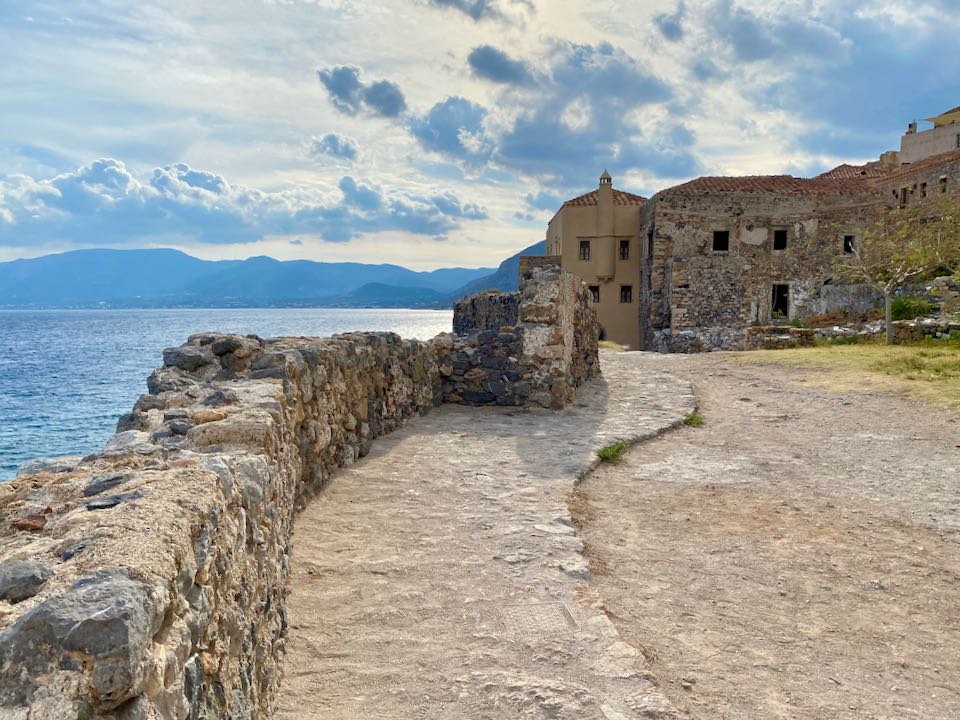
View from the castle town of Monemvasia to the mainlaind Peloponnese.
Mycenae
The citadel and civilization of Mycenae was already ancient history to the classical Athens of Pericles, dating from some 800 years previous – much like late Byzantium is to us today – and was well-known to its latter Hellenic cousins for its storied history of intrigue and war. Sitting on a low hill in the Argolis peninsula, Mycenae is a silent witness to a flourishing period in early Greek history and one of Greece’s top tourist sites.
History
The unique antiquity of Mycenae sometime escapes the comprehension of visitors who may already feel overdosed on Greek history and archaeology. The Mycenaean period of 1450 to 1200 BC is considerably older than most, and was dominated by a rich and powerful culture that is best called to mind by the name of King Agamemnon. Agamemnon started the Trojan war to avenge the elopement of his sister-in-law, Helen, with Paris, the son of the King of Troy. This is the period that gave rise to Homer’s Iliad and Odyssey, and this formerly insignificant hilltop fortification became the most important citadel-Empire in the Hellenic world – at its peak in 1350 BCE, Ancient Mycenae had a population of 30,000.
Mycenae’s draw today is its remarkably well-preserved ruins with their Cyclopean stone walls – so big at times that the ancients believed that Cyclops had actually constructed the citadel. The site consists of the town’s impressive and photogenic ‘Lion Gate’ (the lion is thought to have been the logo of the Royal House of Atreus, from which Agamemnon and his family emanated), as well as a Grave Circle where in 1875 archaeologist Heinrich Schliemann discovered the famous gold death mask of Agamemnon, the ruins of houses, a spooky subterranean cistern, the palace of Agamemnon, and an impressive beehive (tholos) tomb. There is a great museum on site that’s definitely worth a visit to get a better picture of what Mycenae was like in antiquity. All in all, Mycenae is a very captivating site that is understandably very popular with visitors. Be prepared for company.
Itinerary
The site is one that can comfortably be explored in half a day. Allow a bit more to see the Museum. Independent transport is the best option to get there as the site in at a relatively isolated location with no town or village in the immediate vicinity. Booking an organized tour is another option.
Recommended Hotels near Ancient Mycenae
The best hotels to stay near Ancient Mycenae are in Nafplio, only 25 minutes away by car.
- 3Sixty Hotel & Suites – Posh Nafplio accomodation with a swanky gourmet restaurant.
- Gambello Luxury Rooms – Classically-styled restored Nafplio Neoclassical mansion.
- Regno di Morea – Modern boutique hotel in the heart of Old Town Nafplio.
Getting There and Around
Mycenae is probably best covered as a car excursion from Nafplio (23kms) – if you are staying there, or via organized tour. You can do it by bus; the Nafplio bus station runs one bus there and one bus back on weekdays in summer, but you’ll get under two hours to visit the site before the return bus. A cab from Nafplio is another option, but be sure to organize your return cab as well, lest you take your chances hunting for one in the site’s car park when you are ready to return.
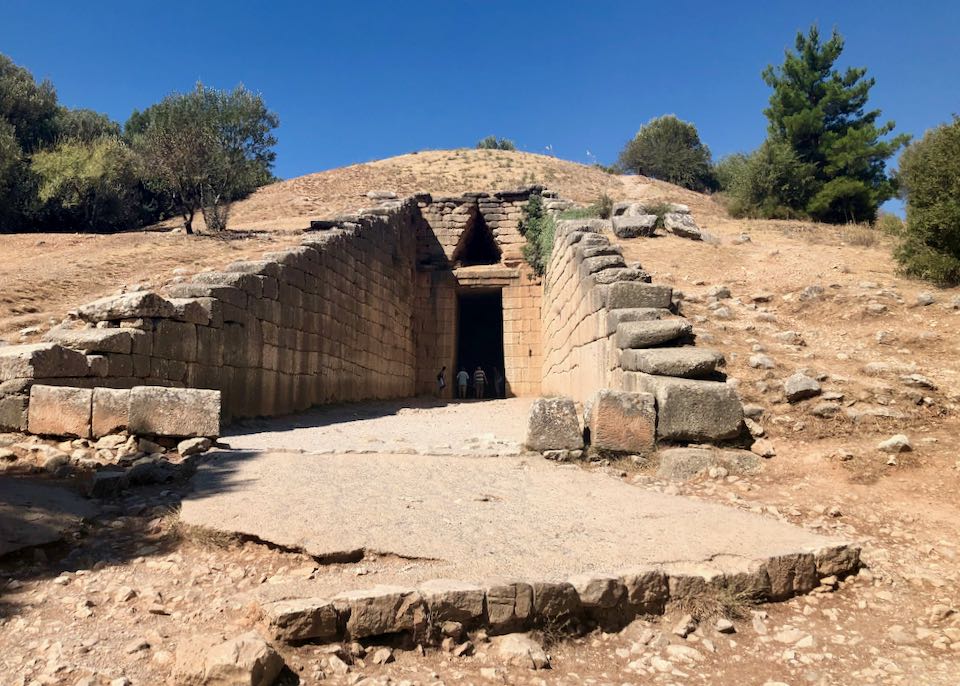
The tholos Tomb of Agamemnon (aka Treasury of Atreus) in Mycenae.
Mystras
The stunning Byzantine fortress town of Mystras sits almost improbably atop and along the slopes of a steep, rocky outcrop that overlooks the Spartan plain and Eurotas river valley. It is an unquestioningly spectacular location and medieval archaeological site, and well worth the slight diversion from the main highway to experience the ruins of this once important Byzantine regional capital.
History
As in the case of Mycenae in the Argolis (and Knossos in Crete), Mystras belongs to another totally disconnected period in Greek history from the better-known monuments of Classical Greece. Mystras was built in 1249 AD by Guillaume de Villehardouin after the Byzantines regained the territory of the Peloponnese, known as the Morea, from the Franks. Mystras was declared the capital of the Byzantine Morea by Emperor Michael VIII Paleologos, and in the latter years of the declining Byzantine Empire Mystras enjoyed an unprecedented period of prosperity. Philosopher and teacher Gemistos Plethon established a school of humanistic philosophy there, reviving the teachings of Plato and Pythagoras and bringing in students and scholars from all over Byzantium. Art and architecture flourished; many frescoes from the time can still be seen by modern visitors. Under the Ottomans from 1460 on, Mystras managed to maintain its Byzantine identity for a couple hundred years until the Venetians took over in 1687. Fortune waxed briefly once more, but the second Ottoman occupation in 1770 sealed the citadel’s fate; by the Greek War of Independence in 1821 there wasn’t much left to care about. There has been a modern restoration movement afoot since the 1950s, and UNESCO declared Greece’s finest medieval archaeological site worthy of World Heritage status in 1989. Mystras is definitely a highlight on any Peloponnese tour.
Itinerary
There quite a bit to see at Mystras, so allocate at least half a day to get around all the levels of the citadel. Start from the top (Kastro) and work your way down if possible. If you are not in a hurry, make an overnight stop; the village of Mystras offers some good accommodation, and Pikoulianika (known locally as the ‘Balcony of Lakonia’) has a couple of guesthouses. Without a rental car, you could stay in Sparti and take a bus or a cab to the site. Bear in mind that the site is precipitous and rocky, so wear good footwear when exploring.
Recommended Hotels near Mystras
- Mystras Grand Palace – 5-star resort with restaurant, 2 outdoor pools, on-site spa, and tennis courts. 6-minute drive to the ruins.
- Mazaraki Guesthouse – Beautiful rooms, suites, and apartments featuring traditional design, private balconies, and fireplaces. Lush mountain greenery, outdoor pool, walkable to the archaeological site.
- Euphoria Retreat – World-class holistic spa hotel offering guided activities, personal consultants, and wellness packages. 4 minutes from the ruins.
Getting There and Around
Having your own transport is definitely the best option here. If traveling from Kalamata through the Langada pass, take a shortcut and look for the poorly-signed turnoff to Mystras at the village of Trypi, from where it is just 2.2kms to Pikoulianika. From the center of Sparti it is 5.2kms drive. A cab from Sparti will cost around €12.00; the infrequent urban bus (three daily) is a cheaper option.
Nafplio
Nafplio is a classy weekend retreat for Athenians and travelers looking for a taste of rural elegance close to the capital. It’s near enough to Athens to make an easy weekend away possible, and sufficiently gorgeous and sophisticated to make it a popular destination all year-round – particularly in winter. In high summer it can become crowded by northern Europeans who have also discovered its irresistible pull.
Neo-classical and Venetian mansions, polished marble pedestrian alleyways and thoroughfares, a couple of hilltop citadels plus an island fortress guarding the harbor, a handful of museums, and an intoxicating blend of boutique shopping, gourmet food, and distinguished regional wines combine to create a destination winner in one of Greece’s most popular towns.
History
Appointed the first Greek capital after the liberation of Greece in 1821, Nafplio’s role as head city was passed over to Athens after only four years by Greece’s first King, Otto. That didn’t deter Nafplio from slowly developing into a swanky retreat for urbanites, artists, merchants, and other posh people in later years.
You can easily spend all your time shopping and dining in Nafplio – the quality of services is top notch as the clientele is generally demanding – but there is more to see. The charming and compact Old Town can be walked end to end in under 20 minutes, but with a bit more effort you can walk up to the looming Acronafplia Fortress that overlooks the Old Town. Walk the lovely seaside Arvanitia footpath on the south flank of Acronafplia for easier recreation. The even more imposing Palamidi Fortress to the southeast of Acronafplia is worth the steep climb (almost 1,000 steps!) though you can drive if you are not up to the effort.
Itinerary
Nafplio expects that its visitors will stay a while so offers a wide range of quality accommodation. Travelers are advised to make plans well in advance as bookings can be hard to come by most times of the year. It’s an easy weekend jaunt from Athens (137km or around 1.5 hours); allow for three nights to get the best of the place. As a stopover on an around the Peloponnese circuit, Nafplio makes a great home base for visits to Epidaurus, Mycenae, and Corinth, and it’s an easy 12km or 15-minute drive to popular Tolo Beach.
Recommended Nafplio Hotels
- 3Sixty Hotel & Suites – Posh accomodation with a swanky gourmet restaurant.
- Gambello Luxury Rooms – Classically-styled restored Neoclassical mansion.
- Regno di Morea – Modern boutique hotel in the heart of Old Town.
Getting There and Around
Nafplio is connected to the rest of Greece by bus only, covered by the KTEL Argolidas network. There are between 11 and 14 direct connections with Athens, as well as one or two services between other major Peloponnese towns such as Kalamata, Tripoli, and Patras. The bus terminal is on Andrea Syngrou on the eastern side Old Town, across from a handy taxi stand (Tel:+30 27 5202 6300). The best way to do justice to Nafplio is to either come with a car (park at the marina and walk in to Old Town) or hire one locally to take in the regional highlights.
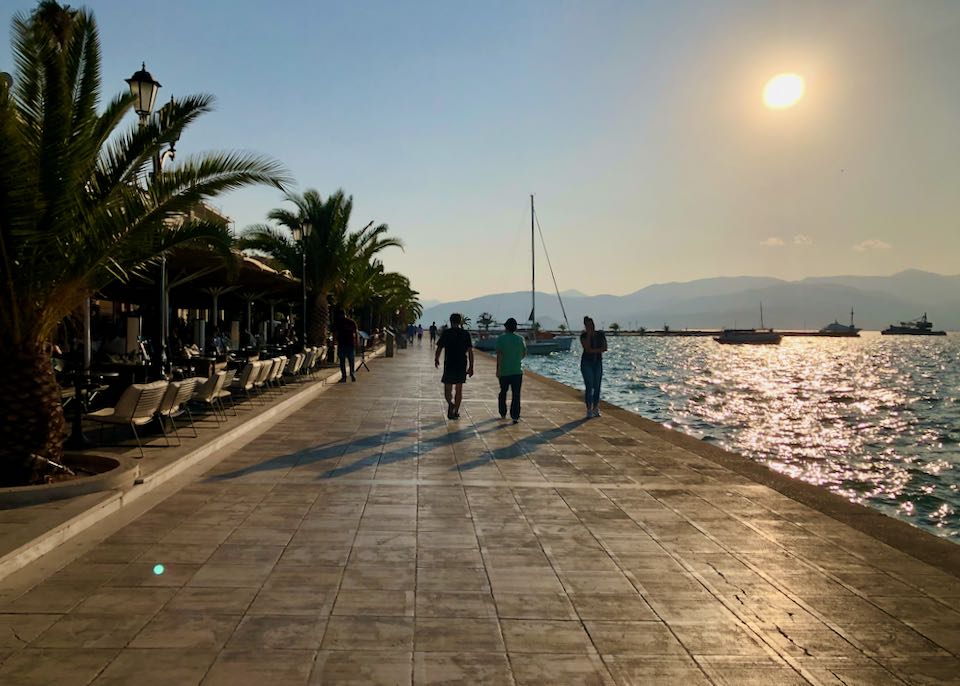
Nafplio Harbor promenade in late afternoon.
Olympia
There is probably no location in Greece whose name is as universally and internationally recognized as Olympia, or more accurately, Ancient Olympia. A visit to the Peloponnese is considered incomplete by most people without a visit to the ancient original home of the Olympic Games.
History
Athletic games have been held at this site for at least 1000 years, long before the modern Olympic Games were re-ignited in 1896. The general principal then – as now – was that warring states would temporarily halt their disagreements and come together peacefully to strive as city states and individuals to win fame and fortune. The first games are believed to have been held here in 776 BC, around the first full moon in August. It was not all athletics; much trade and diplomacy accompanied the events, and poets and historians of the time would read their works in between competitions. The games were abolished by Roman Emperor Theodosius I in 393 AD, and many of the Olympic structures were destroyed by his successor Theodosius II. Earthquakes and other natural events did much to assist the center’s demise. French philanthropist Baron Pierre de Coubertin was instrumental in reviving the concept of the Olympic Games in the 1890s, with the first modern games taking place in Athens in 1896.
There is a lot to see at Olympia and most of it is to do with the infrastructure remains – the temples, commemorative buildings, a workshop, villa, gymnasium, and of course the stadium where the Olympic flame is ceremoniously lit via a solar reflector every four years. The flame is subsequently relayed to the site of the city hosting the games of that particular Olympic year.
Itinerary
Visitors should allot a minimum of two full days (three nights) to fully appreciate the extent and richness of this ancient site and its surroundings. One day should be allocated to visiting the site alone, while the second day should be given over to taking in the two rather well-presented museums: the Archaeological Museum and the more contemporary Museum of the History of the Olympic Games of Antiquity. Modern Olympia is well set up with quality restaurants and accommodation, both in the village itself and a little further out in the pleasant, wooded hills surround the village’s western side.
Recommended Hotels in Olympia
- Hotel Europa – A grand resort style hotel with a pool and excellent outdoor restaurant. You’ll need a cab to get here as it’s a little outside Olympia village, but worth the effort.
- Central Guest Room – Conveniently-located double rooms & apartments with balconies.
- Hotel Pelops – Single to quadruple rooms in a quiet location that’s walkable to ruins.
- Aldemar Olympian Village – 5-star seaside family resort, a half-hour drive from the ruins.
Getting There and Around
Olympia is not particularly well-connected by public transport to any major destinations, though there are a couple of options to choose from when traveling through Pyrgos. Olympia is accessible via local bus from the main Pyrgos bus station; there are twelve daily departures, and the trip takes about 45 minutes. Buses leave from platform 1. There is a very good modern train service that links Olympia with the port of Katakolo, via Pyrgos. There are only three departures daily from Pyrgos, but it is the most romantic way to approach Olympia. Cruise ship passengers make up the bulk of visitors from the port of Katakolo. Taxis in Olympia depart from outside the train station, or if you are staying in Olympia your hotel will helpfully book you one.
Poros
Poros may be an island, but its outlook and culture are firmly linked to its mainland sister town, Galatas. Sitting snugly just off the eastern coast of the the Argolid peninsula, Poros makes both an ideal island destination and base for excursions to the sites of the Argolis region. It is an island holiday without the hassle of a tiring sea trip – or straying far from the mainland. Poros lends itself for a very comfortable and relaxing holiday in itself, though it can easily be visited on a day trip via the short ferry ride from Galatas.
History
Consisting of two separate islands – the smaller volcanic Spheria upon which Poros town and port is located, and the large, lush, and sparsely-populated Kalavria – Poros has been inhabited since antiquity and dates back to Mycenean Greece. Its convenient position in a sheltered port combined with easy mainland access has made it continually important to the area’s geostrategic maneuverings.
Poros town is an attractive mix of pastel-shaded houses, scattered plazas, shops, boutiques, and restaurants and cafés – all in all, a very pleasant island community within earshot of the greater Peloponnese mainland. Overnight visitors generally head for the hotel and accommodation strip that runs east and west along the attractive, shaded beaches of the Peloponnese-facing Kalavria shoreline. A very pleasant round-island road trip can be undertaken easily by car or two-wheeled transport. Kalavria’s interior is wooded and green and there are some splendid views back across the Saronic Gulf to Piraeus and Athens; stop for a swim at the protected and north-facing Vagionia Beach.
Across the busy stretch of water between Paros and the mainland, the more rustic town of Galatas generally plays a secondary and support role to Poros. With many good restaurants and bars, and regular five-minute ferries shuttle between the two settlements, Galatas can make a pleasant home base to visit the island.
Itinerary
Poros can easily be a week’s holiday destination in itself if you want a relaxed island experience but don’t have the time to go further afield. A week on Poros would not be wasted, but it makes an equally good base for touring the Argolid Peninsula’s archaeological sites.
Recommended Hotels in Poros & Galatas
- 7 Brothers – Excellent family-run hotel near Poros Port. Central location, harbor views.
- Saga Hotel – Comfortable rooms, suites, and apartments with outdoor pool. Close to Poros Village, walkable to Kanali Beach.
- New Aegli – Beachfront resort hotel with 2 restaurants, swimming pools, fitness center, sauna, and kids’ playground. Only a 5-minute drive from port.
Getting There and Around
The most obvious access is by road via the Corinth Isthmus. It is 162kms from Athens to Galatas. Passenger vessels and a vehicle ferry run regularly throughout the day from Galatas to Poros Town; Galatas’ bus station serves regular routes to Nafplio and Athens. Another option: travel by ferry from Piraeus and make Poros the starting (and exit) point for a round-Peloponnese road trip. To get around Poros you will need to hire or bring your own wheels; taxis are aplenty.
Porto Heli
Those who like a bit of glitz and dazzle, yachts and canapés, and Dolce & Gabbana need look no further than this swanky resort town at the end of the Argolid Peninsula. It is the perfect place to see and be seen, to schmooze and smile, and to add more pizz to your azz.
History
Porto Heli started life close to the ancient settlement of Alieis (fishermen) somewhere between the 6th and 5th centuries BC. Its protected harbor and anchorage was as popular with ancient mariners as it is today to luxury yacht owners. Not only is Porto Heli blessed with an almost perfect round bay (with excellent beaches), it has all of the amnenities for travelers who require that something extra; it will cost a bit more to stay here, but that is the price of pampering. An undeniably attractive destination, Porto Heli enjoys a reputation not only for its natural beauty but for its relative ease of sea access from Piraeus, as well as onward access to other islands of the Saronic Gulf such as Spetses, Hydra and Poros.
Visitors spend time strolling, shopping, dining, and generally making the port the backdrop for a luxury resort holiday. You can also take a walk around the Ververouda Lagoon just to the west of Porto Heli, stopping to water-ski or simply people-watch. East of the port are a couple of nice port beaches, or head a little further afield to Chinitsa (5km to the south) or Kounoupi (6.7kms southeast) – both beaches have small helipads for folk who prefer to fly to their sunbathing. A great spot for sunset viewing is a little south of Kounoupi in the posh residential area of Agios Emilianos (4kms) – perhaps take a small sunset picnic to the little church on the headland or take in a higher view from the mansion-encrusted hill. Porto Heli lends itself easily to day-visits to either Spetses or Hydra as car and passenger ferries shuttle to and fro very regularly. All in all, Porto Heli is a buzzing destination and the best of the fishing ports on the Argolid coast.
Itinerary
This little port with a big heart is best for an extended stay. It’s good for a week or so, though there is no reason why you cannot drop by for a shorter visit – particularly if you are planning to connect to Spetses and Hydra. If you have a boat, the anchorage is next to perfect – especially when the wave-churning meltemi winds from the north kick in during summer. It’s not a budget destination so be prepared to splash out a bit.
Recommended Porto Heli Hotels
- AKS Porto Heli – Elegant and modern 4-star with a large swimming pool, 3 restaurants, and 2 bars, and beachfront. Beautiful location near the marina.
- Nikki Beach – Swanky beachfront spa resort with gourmet dining options. Many suites offer hot tubs, private, or semi-private pools.
- Hapimag – Wonderful resort on its own peninsula; quiet, beachfront, large pool. All accommodations feature kitchens and dining areas.
Getting There and Around
Boat owners know what to do: just sail right on in through the narrow headlands; make berthing arrangements beforehand. Independent travelers can arrive by car – either directly by sea from Piraeus (check Ferryhopper for routes and schedules) or by road from Athens (174kms). Public transport travelers can take a KTELbus from/to Athens in around 3.5 hours.
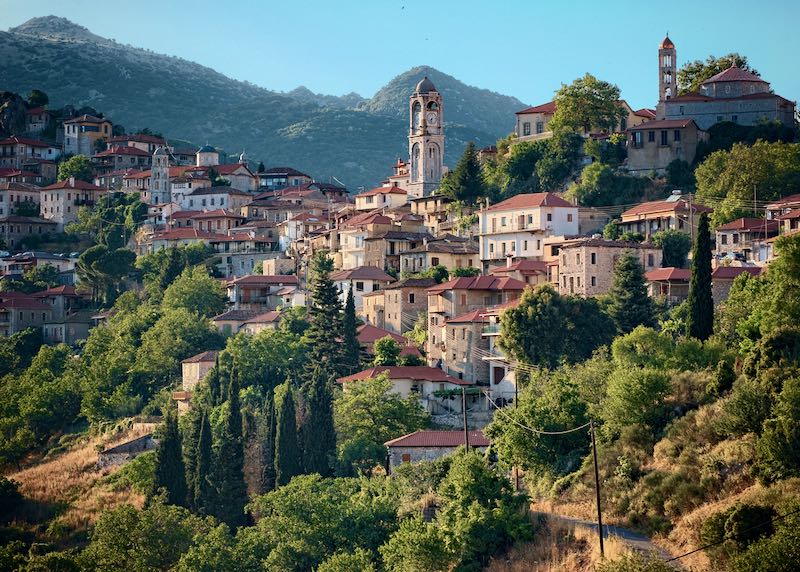

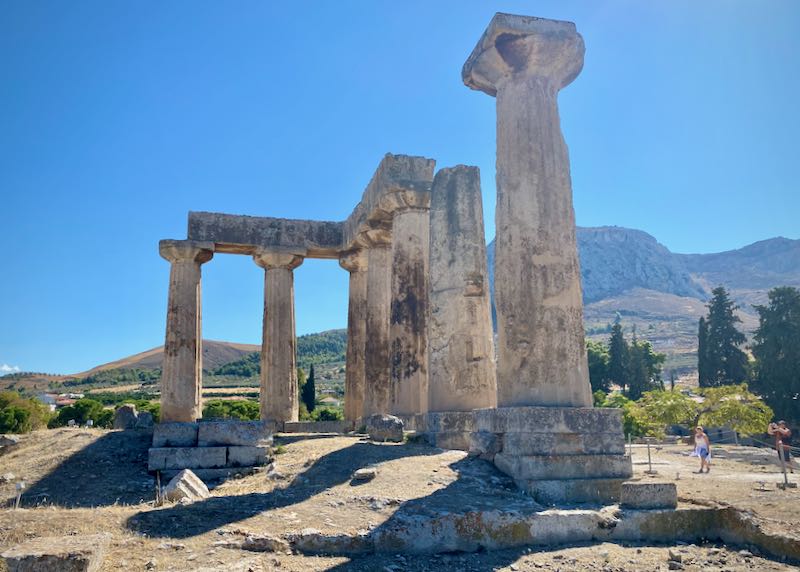

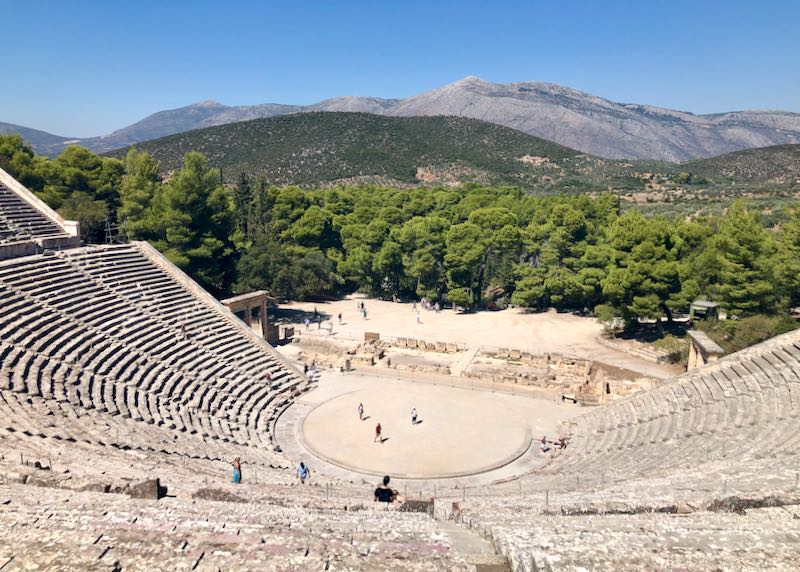

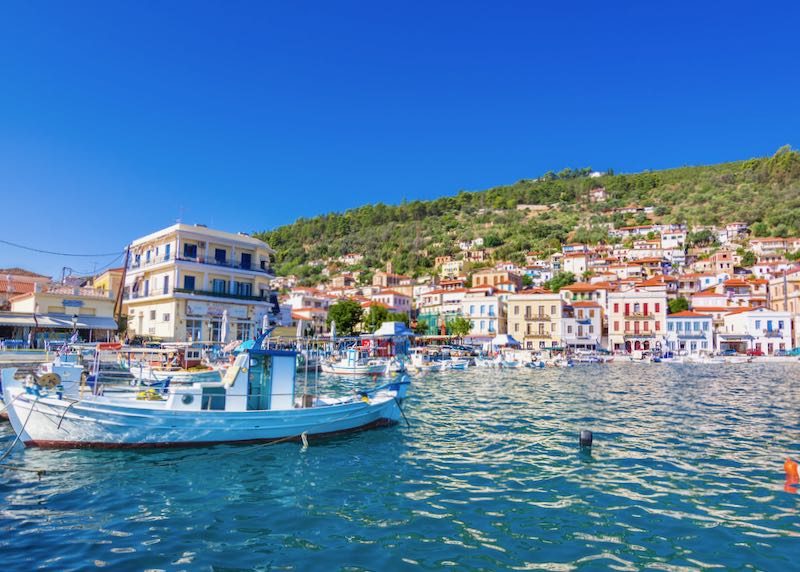

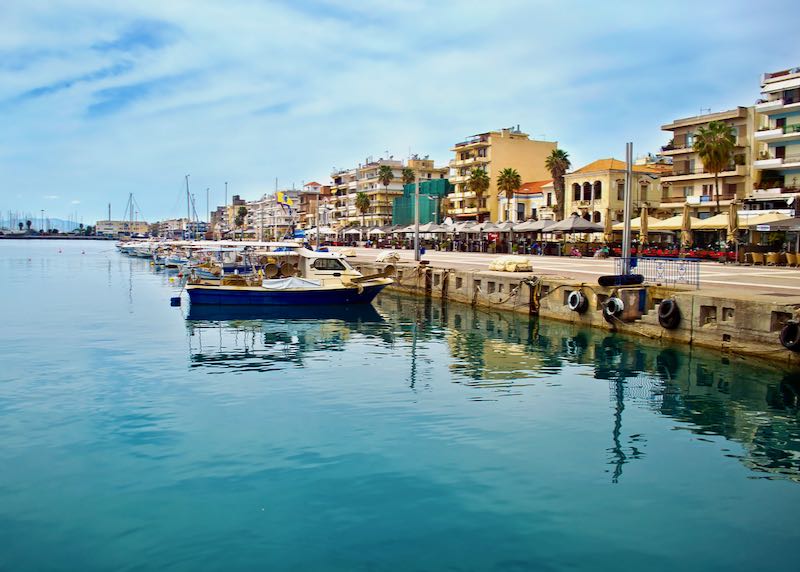

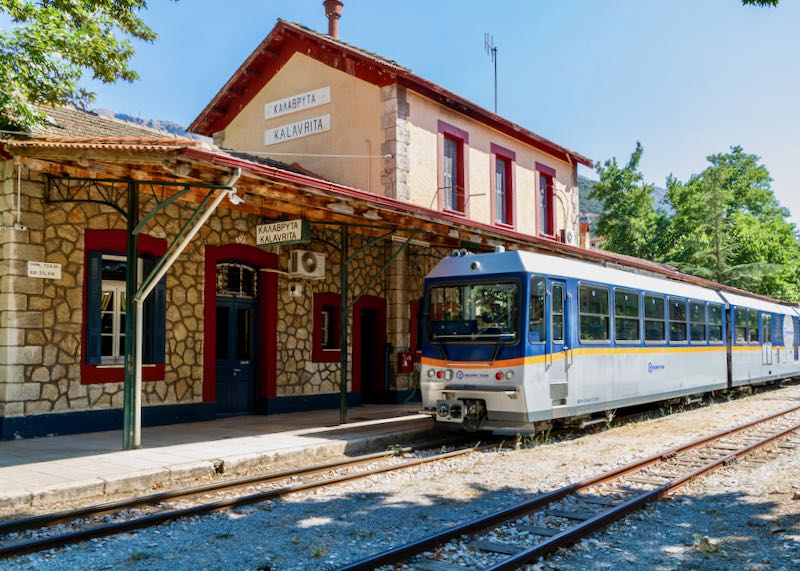

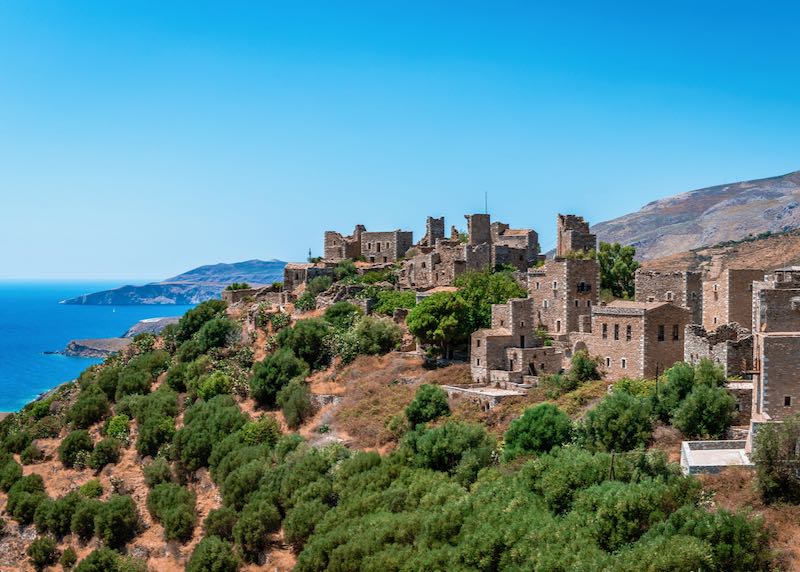

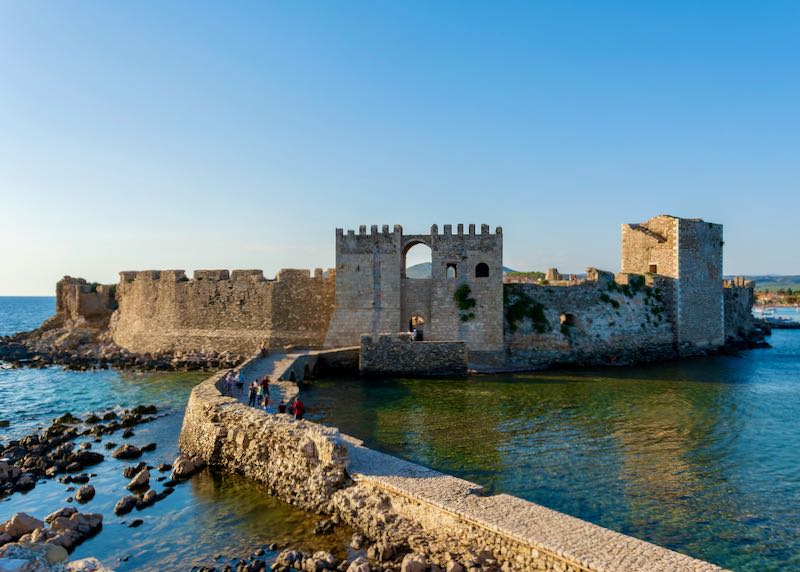

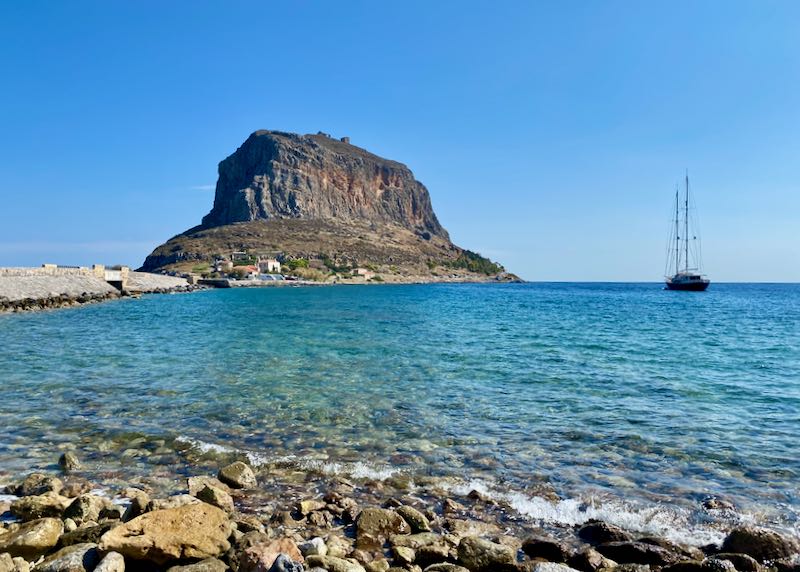

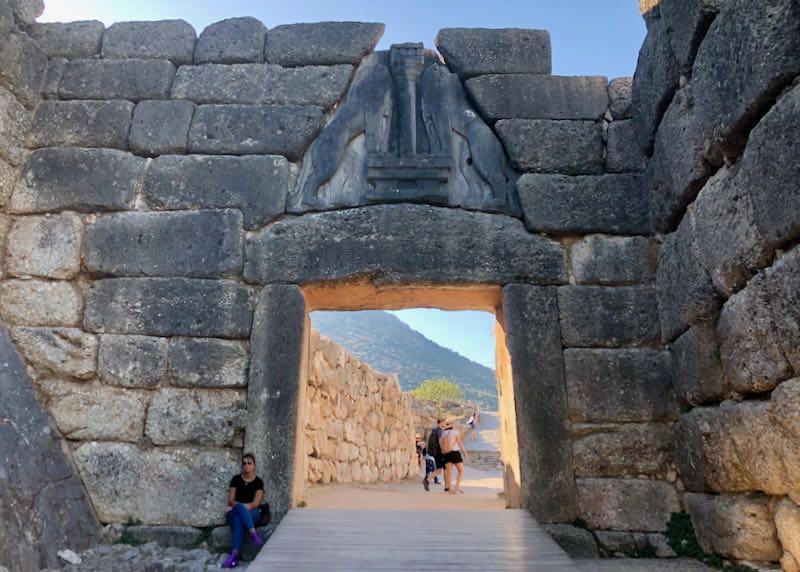

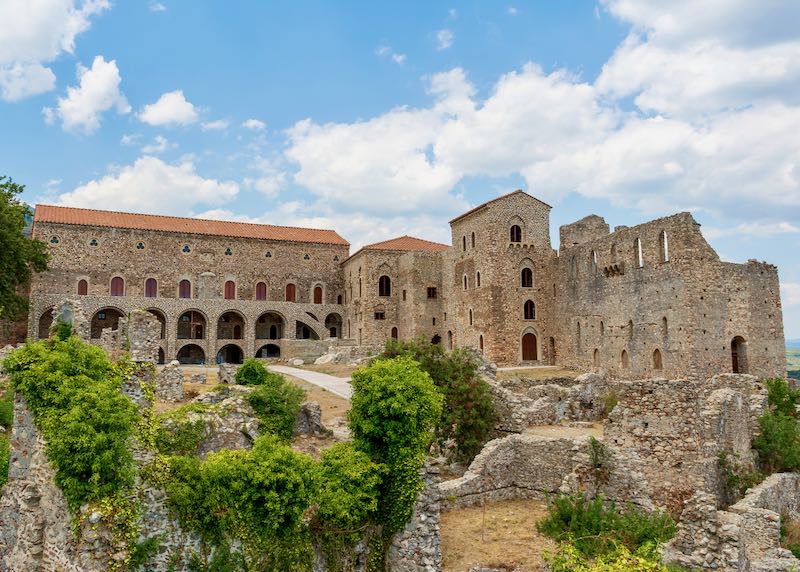

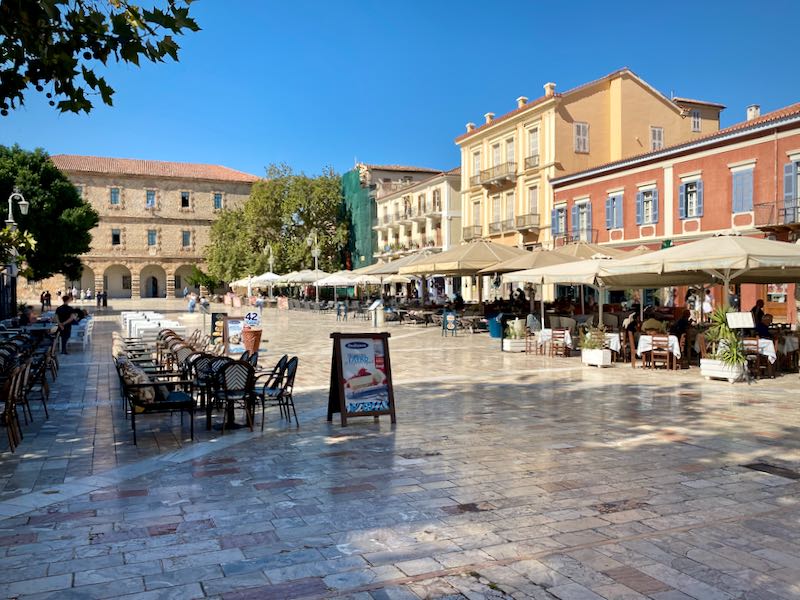

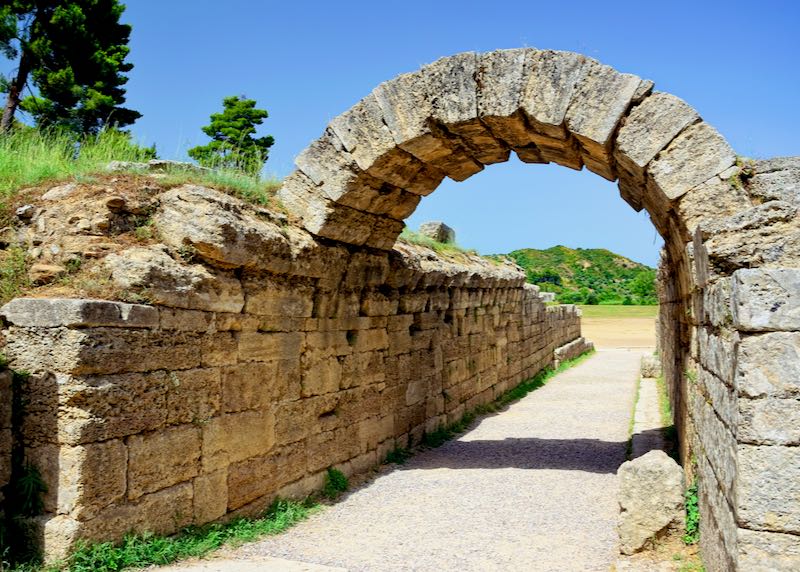

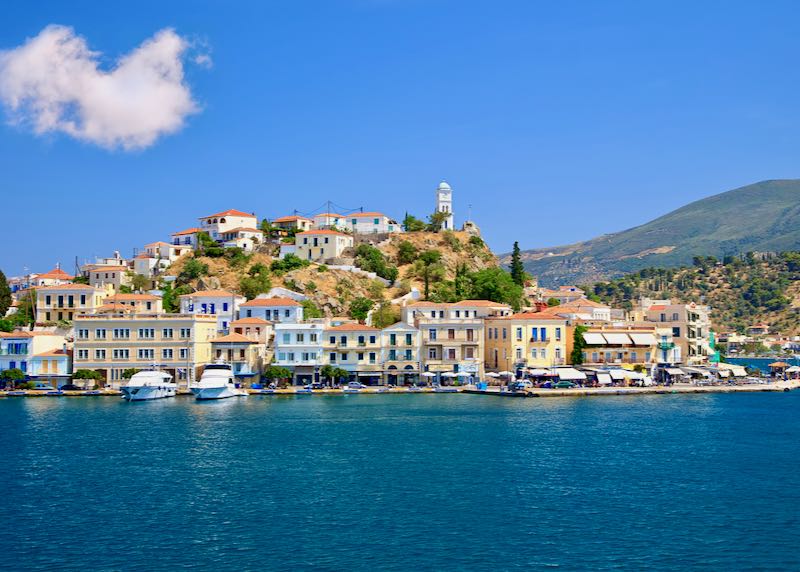

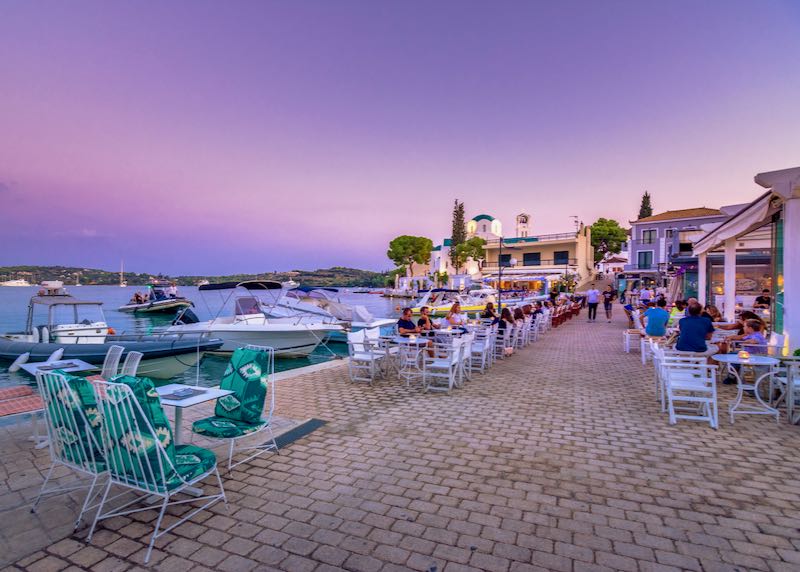

About Santorini Dave